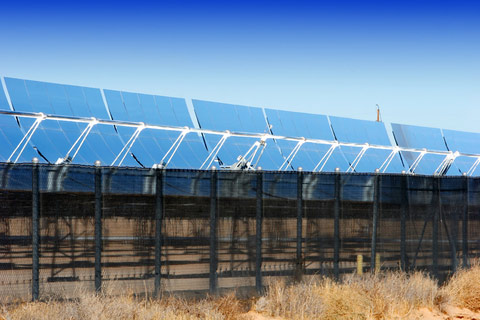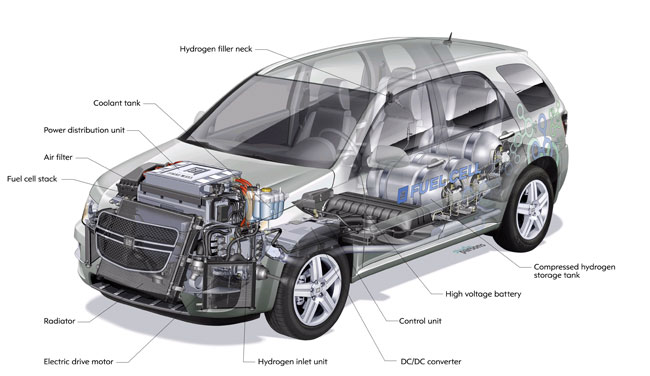Readers Pick: Top 10 Alternative Energy Bets
Top 10 Alternative Energy Bets
Why you can trust Live Science

We polled LiveScience readers about what alternative energy technologies they think will lead the pack, and here are their Top 10 choices. Among the favorites are: Energy from natural sources including the sun, the wind, water, and heat from the Earth's crust; as well as hydrogen and electric powered cars.
Solar Energy at Home

Imagine never paying another electric bill. Solar energy could make this a reality. Solar electric systems employ photovoltaic cells to convert sunlight into electricity, while solar water heaters use solar collector panels to warm up water. Solar energy is clean and renewable, but the upfront investment for these systems can be substantial - typically $25,000 to $30,000 for a solar electric system and $10,000 for a solar water heating system.
Nuclear Power

While the nucleus of an atom is tiny, an extraordinary amount of energy helps hold it together. Nuclear power seeks to harness that energy to safely provide electricity. Roughly 100 nuclear power plants are now operating in the United States, supplying about one-fifth of the nation's electricity. Nuclear power can generate a vast amount of energy without spewing out air pollution during operation, but the radioactive waste that results can remain hazardous for hundreds of thousands of years.
Solar Farms

There are two ways solar farms can be used to generate a lot of electricity. Solar thermal plants - also known as concentrating solar power systems - focus sunlight with mirrors, heating water and producing steam that drives electric turbines, while photovoltaic cells directly convert sunlight to electricity. Solar energy is clean, renewable and has vast potential. But the sun is not always out, which means solar power suffers at night or when it is cloudy, and solar farms can cost hundreds of millions of dollars to build.
Wind Farms

The United States is now the world's largest generator of wind energy, producing roughly 18,000 megawatts of electricity from the wind, enough to power up to 5.4 million average U.S. homes. By 2030, the Department of Energy predicts that as much as one-fifth of the nation's power might come from wind. Other nations are currently ahead of the United States in this regard, at least on a per capita basis. Denmark, for instance, already gets 20 percent of its energy from wind. The wind is a clean, inexhaustible source of energy. But a major concern regarding wind farms is that they shred birds and bats flying into them. The turbines' presence could also fragment the ecosystems they are placed in.
Geothermal Energy

An extraordinary amount of heat is trapped below Earth's surface, as erupting volcanoes show with their violence. Geothermal energy seeks to use this heat to generate electricity and warm up buildings and roads. Roughly 8,000 megawatts of geothermal electricity are currently produced around the world, including about 2,800 megawatts in the United States, or less than one-half of 1 percent of the electricity the nation produces. Geothermal energy is very clean, abundant, and available 24 hours a day, but it requires a lot of money up front before energy starts getting produced.
Power from Flowing Water & Waves

Hydrokinetic devices are like windmills underwater. Flowing water from rivers, ocean currents, tidal streams and artificial waterways such as canals can drive rotors in turbines to generate electricity, just as breezes drive rotors on wind farms. Hydrokinetic power is renewable and does not release airborne pollutants or greenhouse gases, but the technology is about 15 years behind solar and wind technologies, and environmental impacts of ubstructing water flow are uncertain.
Electric Cars

Cars that run purely off electric power are roughly four times as efficient as ones based on gasoline alone and twice as efficient as hybrid vehicles. Electric vehicles naturally produce no tailpipe emissions, and they are cheap to operate. The greatest challenge remains the vehicles' battery packs. The problem involves getting the cost down and improving the packs' durability to ensure the cars operate safely and well under all driving conditions - for instance, making sure they perform in the cold and preventing them from catching on fire if they overheat.
Hydrogen Vehicles

Hydrogen fuel cells react hydrogen with oxygen to generate an electric current that in turn can drive an electric motor. The only tailpipe emission would be water. Hydrogen cars are roughly twice as efficient as those that rely on gasoline. Hydrogen cars face a host of challenges. While hydrogen fuel cells only emit water, current methods of large-scale hydrogen production often extract it from natural methane gas, generating substantial amounts of carbon dioxide in the process. And where, pray tell, do you fill up?
Wind Power at Home

Compared to wind farms, small wind power systems use comparatively petite turbines to support individual homes. A typical residential wind energy system might be 1 to 10 kilowatts in capacity, with a 10- to 25-foot diameter (3 to 8 meter) rotor mounted on an 80-foot (24-meter) tower, according to the American Wind Energy Association. Turbines as small as 400 watts with rotors just 46 inches (117 cm) in diameter can help power water pumps or run lights and appliances. Wind power is free, but many small turbines don't work as advertised, and those that do are often noisy.
Ocean Thermal Energy Conversion

Ocean thermal energy conversion (OTEC) relies on the fact that water near the surface is heated by sunlight while seawater deep in the dark is much colder. OTEC plants use warm surface water to heat ammonia or some other fluid that boils at a low temperature. The resulting gas is used to drive turbines that produce electricity. The gas is then cooled by cold water pumped up from the ocean depths and the resulting fluid is recycled to help generate power. If less than one-tenth of 1 percent of all the solar energy trapped in the oceans could be converted into electric power , it would supply more than 20 times the total electricity the United States consumes everyday. But ocean thermal energy conversion requires a lot of money up front since the devices are massive undertakings.
Get the world’s most fascinating discoveries delivered straight to your inbox.



